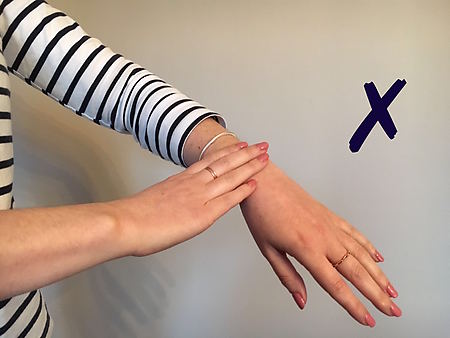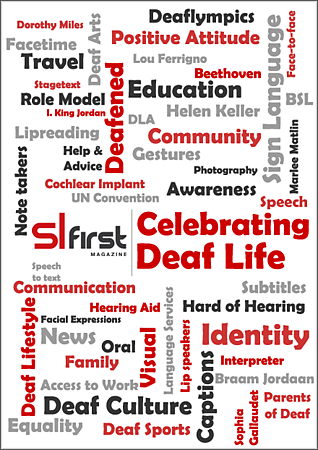Deaf Studies Corner1st February 2016
Preserving standards of BSL teaching is crucial
The teaching of English has not been affected by social interactions, why is BSL
I had a really interesting conversation with a friend of mine, who recently came up with an idea about how to differentiate between the fundamental rules within British Sign Language and what the general BSL using population sometimes use.
His method of explaining the difference was interesting and I felt it would be useful for BSL teachers to use when facing that age old class room dilemma: should we stick to the rules and ignore or explain afterwards what the BSL using community are using or change our teaching to fit with those changes, many of which come about because of outside influences?
Take the example for ‘TIME” – it is not uncommon to see a BSL user now using the widely adopted GSV (gay sign variation) of ‘time’, by tapping their wrist with a full open hand, though strictly speaking the BSL rule is to tap the wrist with only an index finger.


To illustrate the point my friend began with two very simple English sentences;
Please take you’re presents upstairs
Make sure your going to the right place
For the sake of clarity, I have underlined where the English error has occurred. Many English speakers have complained that the similar incorrect use of ‘you’re’ and ‘your’ are becoming very popular, despite the grammatical rules that are in the place to say when it is appropriate to use them - the first sentence should use ‘your’ and conversely ‘you’re’ (you are) for the second sentence.
This got me thinking, we see this occasionally in the pub for example, or even in the social media arena (Facebook, Twitter etc.). I, for one, cannot imagine that an English teacher would modify their style of English language teaching to reflect what is happening out in the pub. Is text speak on the curriculum these days? I don't think so.
This is where the difference between formal and informal language comes into play. An English teacher has every right to ensure that learners are following the correct English format. If students wish to use incorrect sentence structure or slang words outside the classroom, that is their own decision. In any exam, job application, formal written report, etc. I would hope they would recognise the need to revert back to formal English, and because they have been taught it correctly, they will be able to do that.
I want to look at this within British Sign Language teaching, and ask the question, can we say the same? Very often, I come across many teachers using this justification, “This is what people use in the community nowadays, so I have to teach what is out there”.
But a couple of questions spring to mind here:
Do teachers who believe this justification see BSL as equal to English language?
Do teachers know what the formal rules of BSL are?
Are there adequate resources for the BSL teachers to train them on the formal use of BSL?
Over the years, various qualifications require the learners to know the difference between formal and informal BSL. I wonder if somewhere along the line, people got confused between formal meaning, ‘delivery style’ or ‘using grammar in a formal way the same as in English’? Perhaps the whole idea of formality really means that the learner knows and can identify the different style of signs (e.g. ‘time’) and understand when/where to use them, rather than using different body posture to differentiate between formal and informal signing styles?
I wonder if it is time for teachers to restore pride in BSL and ensure that their teaching of the language is delivered as it should be.
The same friend has always said, that when he grew up learning English in his school, the teachers never changed the English language to make it simple for students or bypass any of the important grammatical rules. All they did was use various teaching methods to ensure that my friend understood the formal rules etc.
Perhaps teachers of BSL need to start seeing the language as having the same status as English and teach BSL without modification or simplification in order to ‘help’ learners understand BSL in a ‘watered down’ version. I, for one, cannot help but wonder what BSL might look like in the future, if we continue down this path.
The BSL language is rich and vibrant – let’s keep it that way.
 We at Signworld try to give BSL teachers a better understanding of the grammatical rules and have created resources for teachers to use in order to deliver courses with confidence. To access any of our resources go to www.signworldlearn.com
We at Signworld try to give BSL teachers a better understanding of the grammatical rules and have created resources for teachers to use in order to deliver courses with confidence. To access any of our resources go to www.signworldlearn.com
Article by Linda Day, Signworld
posted in Deaf Lifestyle / Deaf Studies Corner
1st February 2016





